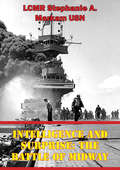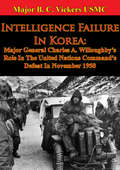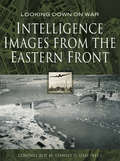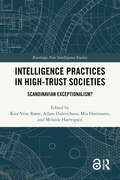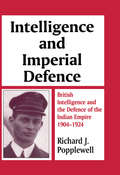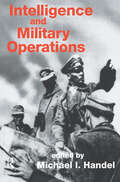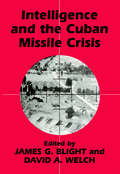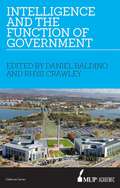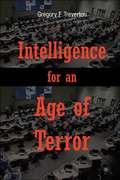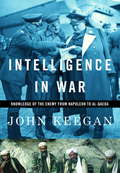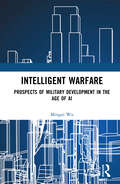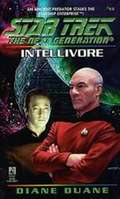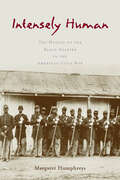- Table View
- List View
Intelligence And Surprise: The Battle Of Midway
by LCMR Stephanie A. Markam USNIntelligence is a key element in the military strategy of surprise. It is perplexing to many that in today's high technology environment that intelligence cannot prevent surprises from happening. The very nature of the intelligence, no matter how much or how sophisticated it is, will still permit one adversary to surprise another. It is crucial that the operational commander have a clear understanding of the process of the production of intelligence, the uses of intelligence and how it can affect the strategy of surprise. The dramatic success of the Battle of Midway, coming so closely on the heels of the shocking disaster at Pearl Harbor, demonstrated that Admiral Nimitz gained an appreciation for the value of intelligence. I will examine intelligence and the strategy of surprise in general terms and shows how the battle of Midway was influenced by them. Finally, I want to point out that though today's operations may be more sophisticated than those of World War II, there are plenty of critical concerns to consider today with regard to intelligence and surprise at the operational level.
Intelligence Cooperation and the War on Terror: Anglo-American Security Relations after 9/11 (Studies in Intelligence)
by Adam D.M. SvendsenThis book provides an in-depth analysis of UK-US intelligence cooperation in the post-9/11 world. Seeking to connect an analysis of intelligence liaison with the wider realm of Anglo-American Relations, the book draws on a wide range of interviews and consultations with key actors in both countries. The book is centred around two critical and empirical case studies, focusing on the interactions on the key issues of counterterrorism and weapons of mass destruction (WMD) counter-proliferation. These case studies provide substantive insights into a range of interactions such as 9/11, the 7/7 London bombings, the A.Q. Khan nuclear network, the prelude to the 2003 Iraq War, extraordinary rendition and special forces deployments. Drawing on over 60 interviews conducted in the UK and US with prominent decision-makers and practitioners, these issues are examined in the contemporary historical context, with the main focus being on the years 2000-05. This book will be of much interest to students of intelligence studies, foreign policy, security studies and International Relations in general. Adam Svendsen has a Phd in International History from the University of Warwick. He has been a Visiting Scholar at the Center for Peace and Security Studies, Georgetown University, and has contributed to the International Security Programme at Chatham House and to the work of IISS, London.
Intelligence Elites and Public Accountability: Relationships of Influence with Civil Society (Studies in Intelligence)
by Vian BakirThis book provides a definitive overview of the relationships of influence between civil society and intelligence elites. The secrecy surrounding intelligence means that publication of intelligence is highly restricted, barring occasional whistle-blowing and sanitised official leaks. These characteristics mean that intelligence, if publicised, can be highly manipulated by intelligence elites, while civil society’s ability to assess and verify claims is compromised by absence of independent evidence. There are few studies on the relationship between civil society and intelligence elites, which makes it hard to form robust assessments or practical recommendations regarding public oversight of intelligence elites. Addressing that lacuna, this book analyses two case studies of global political significance. The intelligence practices they focus on (contemporary mass surveillance and Bush-era torture-intelligence policies) have been presented as vital in fighting the ‘Global War on Terror’, enmeshing governments of scores of nation-states, while challenging internationally established human rights to privacy and to freedom from torture and enforced disappearance. The book aims to synthesise what is known on relationships of influence between civil society and intelligence elites. It moves away from disciplinary silos, to make original recommendations for how a variety of academic disciplines most likely to study the relationship between civil society and intelligence elites (international relations, history, journalism and media) could productively cross-fertilise. Finally, it aims to create a practical benchmark to enable civil society to better hold intelligence elites publicly accountable. This book will be of great interest to students of intelligence studies, surveillance, media, journalism, civil society, democracy and IR in general.
Intelligence Failure In Korea: Major General Charles A. Willoughby’s Role In The United Nations Command’s Defeat In November 1950
by Major Justin M. HaynesIn November, 1950, the United States Army suffered one of its most devastating defeats ever, in the frozen mountains of North Korea at the hands of the Chinese People's Liberation Army. This defeat fundamentally changed the nature of the Korean War, from a near-certain United Nations victory into a fight for its very survival. It was, however, avoidable.This Chinese victory was partially the result of one of the most glaring failures in U.S. military intelligence history. The officer most responsible for this failure was the Far East Command Assistant Chief of Staff for Intelligence (G2), Major General Charles Andrew Willoughby. His inaccurate intelligence picture contributed to General of the Army Douglas MacArthur's flawed understanding of the nature of the Chinese Communist intent.Charles Willoughby correctly identified the potential threat of a Chinese Communist intervention in Korea in late 1950, yet failed to acknowledge the significance of China's strategic warnings, operational preparations for war and tactical confirmation of their intentions. Willoughby's flawed assessment of Chinese intentions in the fall of 1950 was a result of rampant mirror imaging, complicated by circular analysis stemming from his exclusive control over intelligence reporting on the Korean theater. His significant personal prejudices against the Chinese ability fight exacerbated this problem. Once the United Nations Command undeniably confirmed that Chinese forces had entered North Korea, he minimized their significance in order to support MacArthur's final offensive to the Yalu River in late November, ultimately resulting in the defeat of his command.
Intelligence Images from the Eastern Front (Looking Down on War)
by Colonel Roy M. Stanley IIDespite the Luftwaffe being ordered to destroy millions of aerial photos in 1945, the Allies found no less than twenty tons of photos in eleven locations, including a hoard in a Bavarian barn. These together with vast numbers of photographs taken by German soldiers used for Intelligence analysis were put into classified Allied Intelligence files at a time when USAAF and RAF imagery was being destroyed. Covering Iron Curtain countries they were valuable for cartography and target intelligence during the Cold War.The captured German imagery (called GX) in this book show what the German Army knew about the Soviet Union before and during Operation Barbarossa. Examples show Eastern Front landforms, key cities such as Stalingrad, Moscow, Sevastopol, Leningrad and factories. They are accompanied by helpful comments from a skilled photo interpreter.This unique and diverse collection, some taken from 28,000 feet overhead, others taken by soldiers on the ground, reveal the war on the Eastern Front as it has never been seen before.
Intelligence In War: The Value--and Limitations--of What The Military Can Learn About The Enemy
by John KeeganA masterly look at the value and limitations of intelligence in the conduct of war from the premier military historian of our time, John Keegan. Intelligence gathering is an immensely complicated and vulnerable endeavor. And it often fails. Until the invention of the telegraph and radio, information often traveled no faster than a horse could ride, yet intelligence helped defeat Napoleon. In the twentieth century, photo analysts didn’t recognize Germany’s V-2 rockets for what they were; on the other hand, intelligence helped lead to victory over the Japanese at Midway. In Intelligence in War, John Keegan illustrates that only when paired with force has military intelligence been an effective tool, as it may one day be in besting al-Qaeda.
Intelligence Investigations: How Ultra Changed History (Studies in Intelligence)
by Ralph BennettMilitary intelligence, grossly neglected during the interwar period, had by mid-1942 proved itself indispensable through information gathered from intercepted radio messages in the supposedly unbreakable German Enigma cipher. Ralph Bennett, who worked for four years at Bletchley Park as a senior producer of the intelligence (Ultra') derived from the Enigma decrypts, illustrates in this collection of reprinted essays some of the steps by which he and others developed the new type of information and in the process a candid glimpse of the workings of British intelligence both past and present.
Intelligence Practices in High-Trust Societies: Scandinavian Exceptionalism? (Routledge New Intelligence Studies)
by Kira Vrist Rønn Adam Diderichsen Mia Hartmann Melanie HartvigsenThis book examines the dynamics of intelligence practices in the Scandinavian culture of high social cohesion and high trust.Situated within the new body of scholarly literature, the book emphasizes critical empirical investigations of intelligence practices, highlighting the specific cultural settings of such practices. By providing Scandinavian perspectives on intelligence studies, the work distinguishes Scandinavian intelligence studies from the predominant Anglo-American perspectives. Throughout the Western world, the past two decades have generated a rapid expansion of the legal mandate, funding, and capabilities of intelligence agencies which, simultaneously, have been pushed to renegotiate and renew their legitimacy and democratic mandate in response to a recurrent pattern of scandals, leaks, and failures. While these tendencies are also evident in Scandinavia, the book argues that it is important to emphasize the unique context of cohesion and trust in state agencies that differentiates Scandinavian welfare states from the American (and to a lesser extent British) contexts. This book brings together scholars from Norway, Sweden, and Denmark to address the continuous renegotiation of the legitimacy of state intelligence as it plays out in a Scandinavian setting.This book will be of interest to students of intelligence studies, Nordic politics, security studies, and International Relations.
Intelligence Services in South Asia: Colonial Past and Post-Colonial Realities (Studies in Intelligence)
by Ryan Shaffer Asm Ali AshrafThis book explores colonial and post-colonial intelligence services in South Asia. It traces the genealogy of the institutions to analyze changes and continuities throughout the region.The volume also provides a framework for analyzing how intelligence services developed in these countries by looking at both internal and external issues, and shows how vital and sometimes interconnected these issues are for understanding intelligence in South Asia. It demonstrates how some countries and intelligence services borrowed from the colonial era and others started new institutions to protect national security in response to the shifting demands of the Cold War and post-Cold War era. Bringing together a group of international scholars, the anthology delves into the intelligence services of Afghanistan, Bangladesh, Bhutan, India, the Maldives, Myanmar, Nepal, Pakistan and Sri Lanka and traces how these national services developed in similar and diverse ways.This book will be of much interest to students of intelligence studies, Asian politics, security studies and International Relations.
Intelligence Services in the Information Age (Studies In Intelligence Ser.)
by Michael HermanIntelligence was a central element of the Cold War and the need for it was expected to diminish after the USSR's collapse, yet in recent years it has been in greater demand than ever. The atrocities of 11 September and the subsequent "war on terrorism" now call for an even more intensive effort. Important questions arise on how intelligence fits into the world of increased threats, globalization and expanded international action. This volume contains the recent work on this subject by Michael Herman, British intelligence professional for 35 years and Oxford University academic. It compares intelligence with other government information services, and discusses the British intelligence system and the case for its reform. It also addresses the ethical issues raised by intelligence's methods and results: "do they on balance make for a better world or a worse one?". Other chapters explore a wide range of intelligence topics past and present, including the transatlantic relationship, the alliance strategies of Norway and New Zealand, Mrs Thatcher's "de-unionization" of British Sigint, and personal memories of the British Cabinet Office in the 1970s.Michael Herman argues for intelligence professionalism as a contribution to international security and for its encouragement as a world standard. The modern challenge is for intelligence to support international cooperation in ways originally developed to advance national interests, while at the same time developing some restraint and international "rules of the game", in the use of intrusive and covert methods on its traditional targets. The effects of 11 September on this challenge are discussed in a thoughtful afterword.
Intelligence Theory: Key Questions and Debates
by Peter Gill Mark Phythian Stephen MarrinThis edited volume brings together a range of essays by individuals who are centrally involved in the debate about the role and utility of theory in intelligence studies. The volume includes both classic essays and new articles that critically analyse some key issues: strategic intelligence, the place of international relations theory, theories of
Intelligence and Imperial Defence: British Intelligence and the Defence of the Indian Empire 1904-1924 (Studies in Intelligence)
by Richard James Popplewell Richard J. PopplewellThis is the first book to appear on British intelligence operations based in both India and London, which defended the Indian Empire against subversion during the first two decades of the twentieth century. It is concerned with the threat to the British Raj posed by the Indian revolutionary movement, the resulting development of the imperial intelligence service and the role it played during the First World War.
Intelligence and Military Operations (Studies in Intelligence)
by Michael I. HandelTraditionally the military community held the intelligence profession in low esteem, spying was seen as dirty work and information was all to often ignored if it conflicted with a commander's own view. Handel examines the ways in which this situation has improved and argues that co-operation between the intelligence adviser and the military decision maker is vital.
Intelligence and Strategy: Selected Essays (Studies in Intelligence)
by John FerrisJohn Ferris' work in strategic and intelligence history is widely praised for its originality and the breadth of its research. At last his major pioneering articles are now available in this one single volume. In Intelligence and Strategy these essential articles have been fundamentally revised to incorporate new evidence and information withheld by governments when they were first published. This volume reshapes the study of communications intelligence by tracing Britain's development of cipher machines providing the context to Ultra and Enigma, and by explaining how British and German signals intelligence shaped the desert war. The author also explains how intelligence affected British strategy and diplomacy from 1874 to 1940 and world diplomacy during the 1930s and the Second World War. Finally he traces the roots for contemporary intelligence, and analyzes intelligence and the RMA as well as the role of intelligence in the 2003 Gulf War.This volume ultimately brings new light to our understanding of the relations between intelligence, strategy and diplomacy between the end of the 19th century and the beginning of the 21st century.
Intelligence and U.S. Foreign Policy: Iraq, 9/11, and Misguided Reform
by Paul PillarA career of nearly three decades with the CIA and the National Intelligence Council showed Paul R. Pillar that intelligence reforms, especially measures enacted since 9/11, can be deeply misguided. They often miss the sources that underwrite failed policy and misperceive our ability to read outside influences. They also misconceive the intelligence-policy relationship and promote changes that weaken intelligence-gathering operations.In this book, Pillar confronts the intelligence myths Americans have come to rely on to explain national tragedies, including the belief that intelligence drives major national security decisions and can be fixed to avoid future failures. Pillar believes these assumptions waste critical resources and create harmful policies, diverting attention away from smarter reform, and they keep Americans from recognizing the limits of obtainable knowledge.Pillar revisits U.S. foreign policy during the Cold War and highlights the small role intelligence played in those decisions, and he demonstrates the negligible effect that America's most notorious intelligence failures had on U.S. policy and interests. He then reviews in detail the events of 9/11 and the 2003 invasion of Iraq, condemning the 9/11 commission and the George W. Bush administration for their portrayals of the role of intelligence. Pillar offers an original approach to better informing U.S. policy, which involves insulating intelligence management from politicization and reducing the politically appointed layer in the executive branch to combat slanted perceptions of foreign threats. Pillar concludes with principles for adapting foreign policy to inevitable uncertainties.
Intelligence and the Cuban Missile Crisis (Studies in Intelligence)
by James G. BlightThis is the first study to examine throughly the role of US, Soviet and Cuban Intelligence in the nuclear crisis of 1962 - the closest the world has come to Armageddon.
Intelligence and the National Security Strategist: Enduring Issues and Challenges
by Roger Z. George Robert D. KlineThis timely reissue of the 2004 edition (National Defense U. Press), with a new introduction by the assistant director of Central Intelligence for Analysis and Production, targets a broad audience. Based on a class at the National War College taught by the editors, this anthology of 39 previously published and new articles treats the evolution and structure of US intelligence and perspectives on controversial issues facing the intelligence community operating in a democracy. Appendices include the National Security Act and a summary of the beleaguered US Patriot Act. Not indexed. Annotation ©2006 Book News, Inc., Portland, OR (booknews.com)
Intelligence and the function of government
by Rhys Crawley Daniel BaldinoIntelligence plays an important, albeit often hidden hand, in the everyday function of government. Australia's intelligence agencies—collectively referred to as the Australian Intelligence Community (AIC)—are an established and fundamental component of the bureaucracy: they keep watch on potential problems in the name of national security, exploit weaknesses in the name of national interests, and build a picture of the complexities of the broader world for their consumers—other domestic government departments, partner intelligence agencies overseas and, most importantly, Australia's policy-makers. Their aim is to provide the government with 'information'—for that is essentially what intelligence is—to better enable it to tackle the issues confronting it; to be better armed, informed and forewarned of what might lay ahead; and to facilitate coherent policy-making. But we should not expect intelligence to be perfect, nor should we think that good intelligence guarantees good policy. This book draws on a wide range experts including academics, former and current strategic advisers and members of government, private industry professionals and intelligence community experts, to provide a diagnostic, clear-eyed approach in explaining, accessing and exposing the central foundations and frameworks necessary for effective practice of intelligence in Australia as well as the shaping of intelligence expectations.
Intelligence for Peace: The Role of Intelligence in Times of Peace (Studies in Intelligence)
by Hesi CarmelThis collection of articles is by experts in the field who are convinced that intelligence has an important role to play, not only in times of war and confrontation, but also in times of conciliation and political processes.
Intelligence for an Age of Terror
by Gregory F. TrevertonDuring the Cold War, U.S. intelligence was concerned primarily with states; non-state actors like terrorists were secondary. Now the priorities are reversed and the challenge is enormous. States had an address, and they were hierarchical and bureaucratic. They thus came with some 'story'. Terrorists do not. States were 'over there', but terrorists are there and here. They thus put pressure on intelligence at home, not just abroad. The strength of this book is that it underscores the extent of the change and ranges broadly across data collection and analysis, foreign and domestic, as well as presenting the issues of value that arise as new targets require collecting more information at home.
Intelligence in War: Knowledge of the Enemy from Napoleon to Al-Qaeda
by John Keegan'No war can be conducted successfully without early and good intelligence, ' wrote Marlborough, and from the earliest times commanders have sought knowledge of the enemy, his strengths and weaknesses, his dispositions and intentions. But how much effect, in the 'real time' of a battle or a campaign, can this knowledge have?In this magisterial new study, which will fascinate readers of both military and more general history, the author of A History of Warfare goes to the heart of a series of important conflicts to develop a powerful argument about intelligence in war. From the Napoleonic Wars to the sophisticated electronic warfare of the twenty-first century, John Keegan finds linking themes which lead to a compelling conclusion. His narrative sweep is enthralling, whether portraying the dilemmas of Nelson seeking Napoleon's fleet, Stonewall Jackson in the American Civil War, Bletchley as it seeks to crack Ultra during the Battle of the Atlantic, the realities of the secret war in the Falklands or the polymorphous intelligence issues of the contemporary fight against terrorism.
Intelligence, Defence and Diplomacy: British Policy in the Post-War World (Studies in Intelligence)
by Richard J. Aldrich Michael F. HopkinsWhat was Britain's reaction to the death of Stalin? How has Britain reconciled a modern nuclear strategy with its traditional imperial defence commitments around the world? How has secret intelligence affected the Special Relationship' since 1945? Certain clear questions and perennial themes run through British overseas policy since 1945. This book examines them, drawing on new research by leading historians and scholars in the field.
Intelligent Warfare: Prospects of Military Development in the Age of AI
by Mingxi WuThis book examines the future trend toward "intelligent" warfare considering the global environment, the history of warfare, and scientific and technological advancement. It develops a comprehensive set of theoretical frameworks, application concepts, and evaluation criteria for military intelligence.The volume is packed with theoretical highlights and vivid examples, including the tracking of Osama bin Laden, the decapitation strike against Qasem Soleimani, the remote assassination of Iranian nuclear scientists, the drone war in the Nagorno–Karabakh conflict, modern equipment deployed in the Palestinian–Israeli conflict, and the war between social media groups. In addition, the author envisions a possible future for "intelligent" wars in which adversarial parties engage in combat through virtual and unmanned systems. This nature may help avoid the brutality and high death toll associated with traditional warfare.The book explores the possibility of future civilized warfare. It will be of interest to researchers, academics, and students in the fields of politics, military intelligence, and military technology, and to those who are interested in intelligent warfare in general.
Intellivore (Cold Equations #45)
by Diane DuaneThe Great Rift lies between the Sagitarius and Orion arms of the galaxy. Stars are scarce there, beyond the authority of the Federation, and legends abound of lost civilizations and of ancient monsters that prey on those who dare to venture into the vast darkness between the stars. When several ships and colonies mysteriously disappear into the Rift, the U.S.S. Enterprise leads an expedition to investigate various disturbing reports. Accompanied by two other Federation starships, Picard and his fellow captains discover a bizarre menace of unimaginable power. And the only way to trap this destructive entity is to use the Enterprise as bait.
Intensely Human: The Health of the Black Soldier in the American Civil War
by Margaret HumphreysBlack soldiers in the American Civil War were far more likely to die of disease than were white soldiers. In Intensely Human, historian Margaret Humphreys explores why this uneven mortality occurred and how it was interpreted at the time. In doing so, she uncovers the perspectives of mid-nineteenth-century physicians and others who were eager to implicate the so-called innate inferiority of the black body. In the archival collections of the U.S. Sanitary Commission, Humphreys found evidence that the high death rate among black soldiers resulted from malnourishment, inadequate shelter and clothing, inferior medical attention, and assignments to hazardous environments. While some observant physicians of the day attributed the black soldiers' high mortality rate to these circumstances, few medical professionals—on either side of the conflict—were prepared to challenge the "biological evidence" of white superiority. Humphreys shows how, despite sympathetic and responsible physicians' efforts to expose the truth, the stereotype of black biological inferiority prevailed during the war and after.
